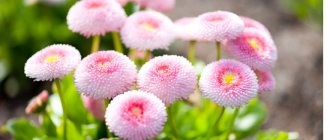Callas, among other flowers, are distinguished by their delicate, mesmerizing beauty due to their large white corolla, similar to a bird’s wing, which is why they are popularly called callas. The new varieties look luxurious and elegant, exuding a subtle scent of vanilla, with bracts of various colors: pink, blue, burgundy and even black.
But there are many legends, signs and magical superstitions surrounding calla lilies, because of which some gardeners do not dare to have this flower at home.
Briefly about the plant
The homeland of calla lilies is Africa, where these plants grow up to 1.5-2 m tall, populating wet wetlands. In ancient times, snow-white flowers were planted to decorate the gardens of noble Egyptians, which is confirmed by drawings. Now calla lilies are grown by amateur flower growers not only in gardens, but also as indoor plants.
Calla is distinguished by wide, glossy, heart-shaped leaves of a bright green color with silver speckles, growing on long petioles that form a strong rosette.
Small flowers are collected in a yellow inflorescence-cob, which is wrapped in one large bract of white (wild calla lilies) or a different color (in houseplants). The original flower is formed on the elongated arrow of the plant.
Calla lilies are poisonous because they contain alkaloids and a specific substance similar to saponins, so they only work with the flower with gloves. In case of poisoning, convulsions, severe vomiting, heart rhythm disturbances, and diarrhea appear.
Possible problems and difficulties during cultivation
When growing calla lilies, flower growers are faced with a lack of flower stalks, yellowing of leaves, the appearance of diseases and attacks by insect pests. Only armed with knowledge can you overcome difficulties and eliminate future mistakes when caring for a plant.
Flower diseases and pests: control methods
More often calla lilies are affected by fungal, less often bacterial diseases. The most common crop pests are aphids and spider mites. Insects are controlled by spraying with soap solutions, Iskra, Komandor, Fitoverm, Molniya.
Anthracnose
Waterlogging of the soil, high temperature and air humidity lead to the appearance of small brown spots on the leaves of calla lilies. Over time, the diameter of the spots increases, the center turns white, and the edges are bordered by a red stripe. Leaves and flowers fade, weaken, dry out and curl.
Measures to combat fungal disease include removing damaged parts of calla lilies, reducing the intensity of irrigation, and treating the plant with Fitosporin-M and Fundazol.
Gray rot
The disease caused by the fungus Botritis cinera affects the leaves, stems, and flowers of the crop. A gray coating immediately forms on the leaves. Gray-green areas appear on the flowers, turning brown over time. Subsequently, the bedspread acquires a dirty gray coating. Like all fungal diseases, gray mold develops in conditions of excessive heat and humidity.
When spots appear, the diseased parts of the plant are removed and the intensity of moisture is reduced. Among the fungicides suitable for control are Gamair, Trichodermin, and Rovral.
Bacterial rot
Characteristic signs of a bacterial disease are rotting of peduncles and leaves at the base. The above-ground parts of the plant gradually die. The roots become wet and acquire brown spots.
The disease cannot be cured. The infected crop is disposed of. Preventive measures include careful selection of planting material, treatment of tubers and rhizomes with fungicides before planting, and avoidance of mechanical damage to the adult plant.
What do the legends tell about?
There are several stories about the appearance of a charming flower. A generally accepted legend is that the daughter of one strong God, once on earth, met a beautiful local young man from a poor Indian family. The young people fell in love with each other and met secretly.
God the Father, when he learned about this, became angry and imposed a ban on visiting the earth. But the daughter continued to meet with her beloved. Then the all-powerful father made his daughter invisible, but this did not stop the lovers. So that the outlines of the girl’s figure could be seen, the young man covered her with a blanket depicting the most beautiful snow-white flowers.
The young people mourned their fate for a long time and sadly. In the end, God took pity on the lovers and made the daughter visible again. In place of the fallen blanket, plants with snow-white flowers soon grew, a symbol of purity and purity.
A popular legend is about an unfortunate young girl whom the leader of the tribe saw and wanted to marry when she attacked a small village. The beauty, in order not to endanger her family with her own refusal, agreed. But on the way to the wedding ceremony, the bride, in a snow-white outfit, threw herself into a blazing fire.
Before she could reach the deadly fire, the girl, by the will of the Gods, became a beautiful white flower - a calla lily. Now these flowers are a magical talisman used by girls and unmarried women as a talisman to gain happiness and maintain tenderness and purity.
Greek myth tells about the newborn Hercules, the son of Zeus and an earthly woman. Deciding that Hera would be suitable as a foster mother, he put the child to her chest while she was sleeping.
The goddess, frightened and pushing the baby away, did not notice how the milk spread across the sky, giving rise to the Milky Way. Those drops that reached the ground turned into graceful snow-white flowers of extraordinary beauty.
Envying the impeccable beauty of the plants, Venus, the goddess of passion and beauty, decided to spoil the flowers and cursed them. So, in the middle of the corolla, an inflorescence grew in the form of a long thorn.
Versions of why calla lilies are called the flower of death
Many people associate calla lilies with death and consider them funeral flowers, not noticing that they also come to the cemetery with roses, carnations, orchids, dahlias and other flowers.
For European Catholics, it is customary to send someone on their last journey only with white flowers, symbolizing grief. Callas were taken more often than other plants, because previously only white coloring was found among callas. So these flowers, back in the Middle Ages, became a ritual accessory and grew on grave mounds.
Also, this plant is considered the flower of death because of its appearance as a wax statue, similar to a candle, and artificial flowers are not given to a living person. Some eyewitnesses claim that a calla lily bloomed before a family member died. This means that this was a warning, and it is recommended to preserve such a flower as a talisman or amulet.
Another version connects the structure of the flower with death: the inflorescences are similar to funeral candles, and the snow-white bracts are similar to a blanket for the deceased. Another similarity is that callas bloom only at night, during the mystical and mysterious part of the day.
These versions discourage people from growing calla lilies in the house, fearing the arrival of death, although there is no evidence of a connection between the flower and death. There is an opposite version, which claims that the flower has positive energy that attracts happiness and good luck to the house.
Flowers in the house according to Feng Shui - the meaning of indoor plants
Living plants bring aesthetic pleasure and joy to people. Flowers in the house have a direct impact on human energy; according to Feng Shui (an ancient Chinese teaching), to harmonize the atmosphere in the home and create a favorable microclimate in it, green representatives of the flora are selected and arranged in a certain way.
Green plants are living organisms; their biofield, when correctly positioned in space, can balance and enhance different aspects of people’s lives. The shape, size of stems, leaves and color of inflorescences are of great importance. To get the maximum positive energy from a space, it is better to select indoor plants for your home according to Feng Shui; at home you should keep specimens that stretch and grow upward. They activate a positive aura. Plants with round, neat leaves will bring peace and tranquility to the room.
Is it worth growing callas at home?
In the Russian climate, florists recommend growing the Ethiopian calla lilies and Richardia. These plants are not capricious; they grow without problems outdoors and on window sills in wooden flowerpots or in coconut flower pots. The main thing that an exotic flower requires is sufficient lighting.
Health benefits of calla lily:
- improves sleep;
- calms the nerves;
- Helps lift your spirits and boost your immunity;
- supports in the treatment of cardiovascular diseases;
- treats the respiratory system.
The flower is able to take away the diseases of its owners, giving in return vital energy, strength and health.
If you believe the popular beliefs associated with the house, evil spirits are afraid of this flower and avoid homes with callas. A plant growing in the house provides peace, well-being and brings good luck.
Standing in the bedroom, calla lilies eliminate marital quarrels and establish peace. This is a home talisman with which the owners are not afraid of the evil eye, damage, gossip, deception and evil intentions of strangers.
Surprisingly, the plant subtly senses all family members, somehow determining their state of mind. Reacts with withering if one feels apathetic, depressed, or anxious for no reason. Begins to get sick, feeling the approach of illness in one of the household members. With the appearance of pests, you should be wary of ill-wishers and gossip.
Calla, which does not bloom for a long time, pleases with color as prosperous days approach and the end of quarrels, troubles and misfortunes. For those who are single, a speedy marriage is predicted. For a patient, the blooming of calla lilies is hope for a speedy recovery. This flower also predicts the weather: before rain, the corollas open strongly, and before drought they shrink.
Requirements for growing conditions
Even novice amateur gardeners can grow calla lilies on a windowsill if they follow the care recommendations. It is necessary to create conditions close to natural.
Illumination
Calla requires continuous lighting throughout the year, including the dormant period.
Lack of light leads to yellowing of foliage, lack of flowering or faded color.
Direct sunlight causes leaf burns, so plant pots located on the windowsill are fenced off with translucent tulle.
Temperature
White Ethiopian callas do well at temperatures of 18-20 ºC. Plants overwinter in heated rooms with temperatures not lower than 14–18 ºC.
For colored tuberous callas, the optimal temperature range is in the range of 22–25 ºC. The dormant period of the bulb is safely tolerated at +3-7 ºC. Sudden temperature changes lead to the cessation of flowering. Calla lilies are brought out on loggias and open terraces only in summer.
Humidity
Humidity is an important factor when growing a plant. In the subtropical swamps of South Africa, where callas come from, the humidity is high - 70–80%. If the indicators in the apartment do not correspond to the norm, the crop is sprayed twice a day - morning and evening, and the leaves are regularly wiped with a damp cloth.
See also
Description of the best varieties of reticulated irises, planting, cultivation and careRead
Required soil composition and pot size
Despite the lightness of the products, a wide range of different volumes and configurations, a plastic pot is inferior in quality to a clay pot. Pottery is porous, which allows excess moisture to evaporate. They have universal colors that suit different varieties of calla lilies.
For the Elliot and Remani species, pots with a diameter of up to 20 cm are needed. For children, even smaller - 10 cm. Ethiopian callas with a developed rhizome require a container with a diameter of 30–40 cm, a height of 60. Suitable soil for callas consists of equal parts of peat, garden soil, sand and two parts of organic matter - humus or rotted manure. The soil should be slightly acidic, the optimal pH is six.
Other signs associated with the flower
It has long been believed that calla lilies symbolize a pure and innocent soul, so these flowers are often intended for young girls. White flowers resemble unique and exquisite feminine beauty, so they are suitable for unmarried middle-aged women.
- Calla lilies are placed in the room where creative people work. The flower charges them with inspiration, encourages them to come up with new ideas, and also instills confidence in business.
- If a woman is single, then gifted calla lilies, in a bouquet or in a pot, will help her meet her loved one sooner.
- When calla lilies are given to new residents, the flowers help the owners quickly settle down, make the house cozy, and live in harmony and peace.
- Still considered the flower of death, calla lilies should not be given to older people, so as not to hint at old age.
- Callas are allowed to be given in even numbers, unlike other flowers.
- If you see calla lilies in a dream, you should expect good health, good luck, passion and new love.
Protective magical properties are noted not only in fresh flowers, but also in their images on clothes, paintings, and photographs.
Having understood the signs and myths, you should not believe that calla lilies symbolize death. The luxurious flower has strong positive energy, so the plant is safe and recommended by florists for growing in the garden or in the room.











